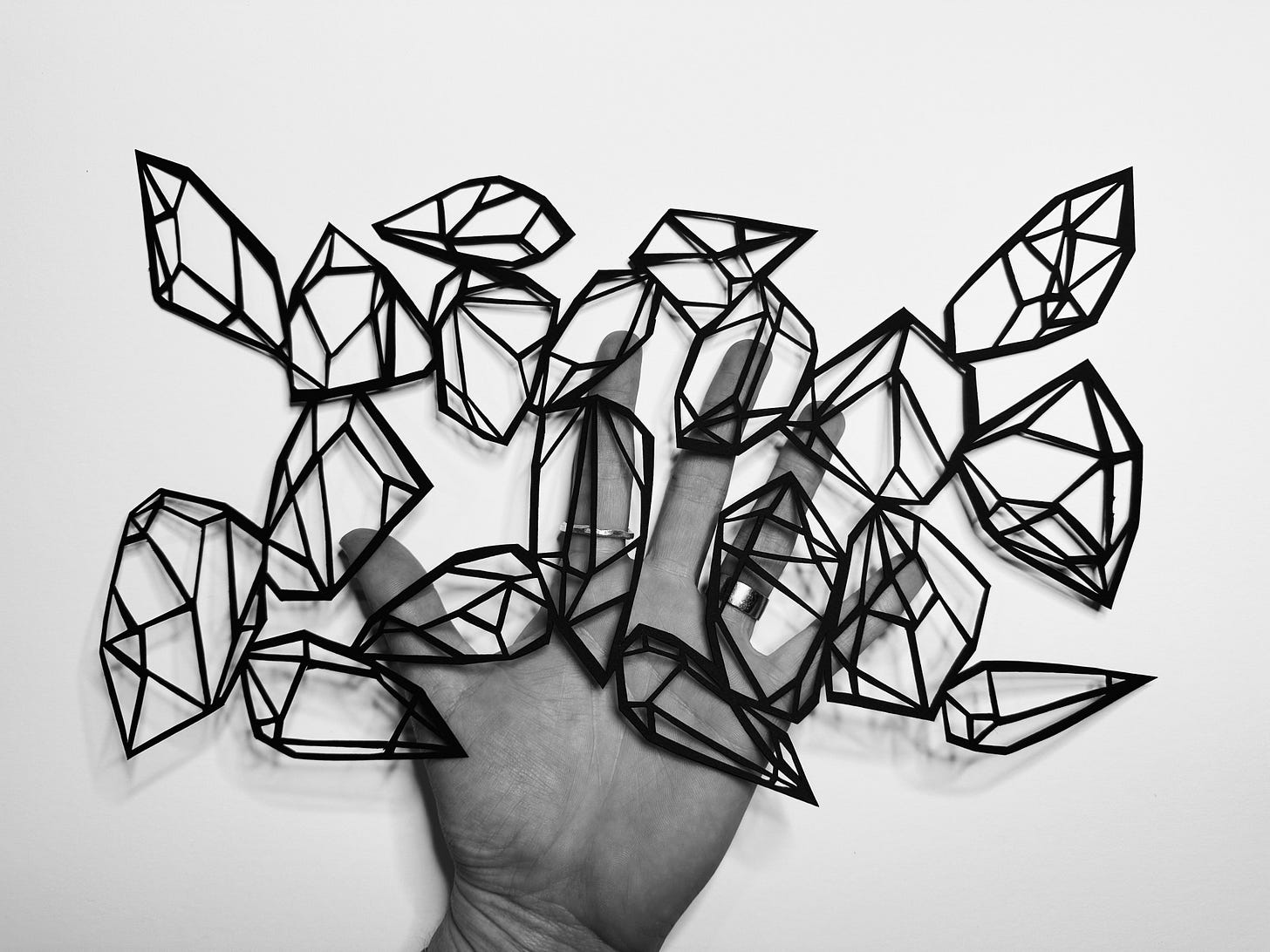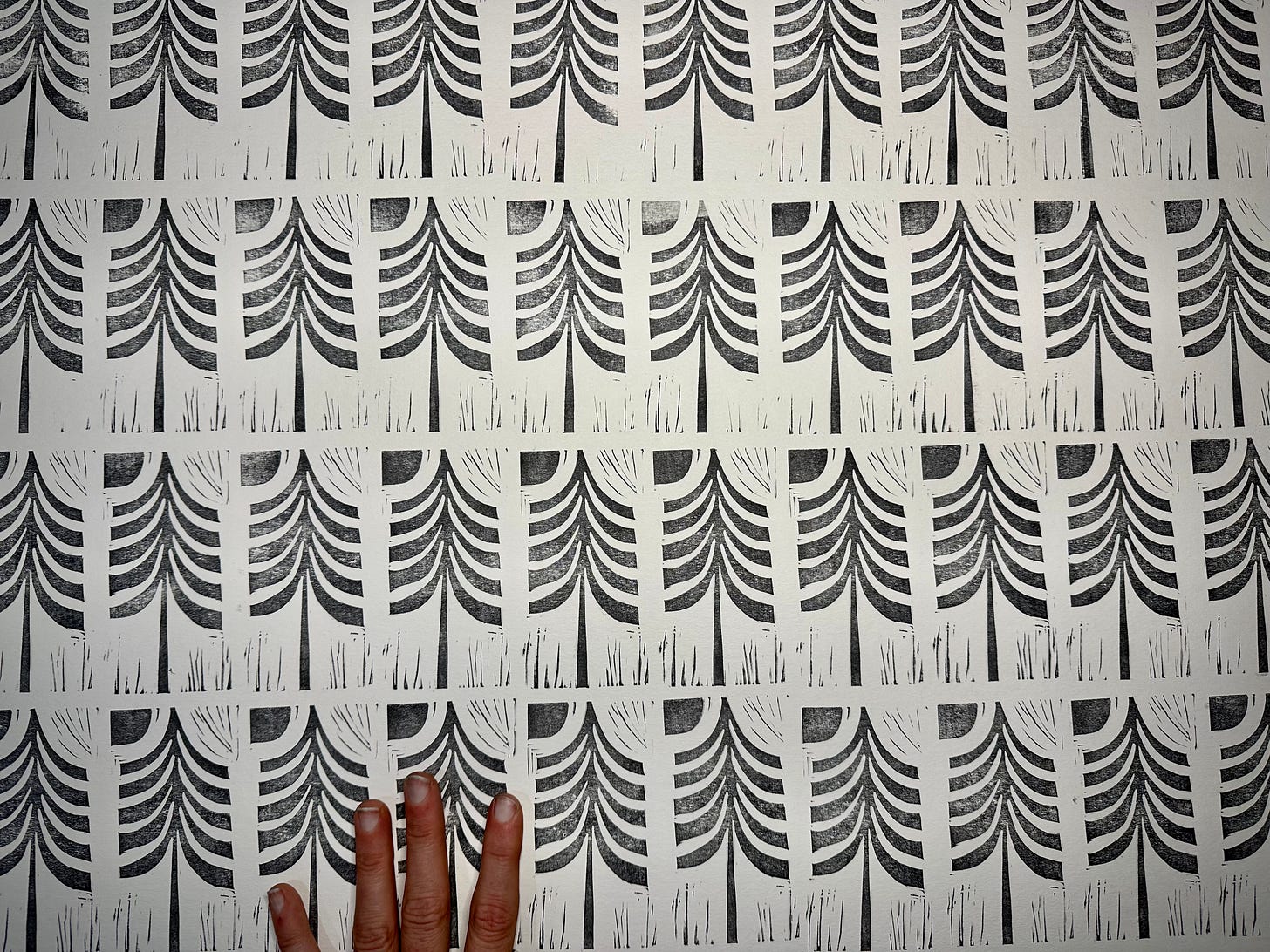
It’s business card making season. Yes, “making.”
At some point several years ago I was heading into the holiday selling season, and I decided it might be nice to include a little handmade thing in each package. I grabbed a large piece of watercolor paper and filled it with trees. I cut them into small pieces, and hand-wrote my website on the back. Every single package I sent out that November and December had one of these. I must have made hundreds.
I’ve done it every year since.
As my own creative business has grown, I’ve had to change the way I do a lot of things to make things more “efficient,” a little more easy. “Streamline” is probably the businessy term some would use. But there are certain things that I don’t want to give up. The handmade business cards in packages is one of them.
This year I decided to do a small block carving of a tree instead. Could I make a carving or a papercut, scan it, and get numerous copies printed? Of course. Does making handmade business cards take time. Also, of course. But do I want to have some time spent creating something handmade? Yes. It’s one of those things I don’t want to give up.
I want to be a person who makes things.

“Creativity belongs to the artist in each of us. To create means to relate. The root meaning of the word art is to fit together and we all do this every day. Not all of us are painters but we are all artists. Each time we fit things together we are creating–whether it is to make a loaf of bread, a child, a day.”
- Corita Kent
A common question we probably all have asked and been asked: “What do you do?”
What are we actually asking here?
“What do you do for fun?”
“What do you do when you’re bored?”
“What do you do on a sunny Saturday morning?”
“What do you do to get through the dark of winter?”
“What do you do when you really want to eat pie but there’s no pie in the house?”
One could dream. No, of course the question is “what do you do for work?” Which is a polite way of asking, “what do you do for money?”
I don’t mind being asked “what do you do for work?” because at least it’s specific in nature: we’re naming what we’re really after. I happen to enjoy learning about different people’s professions. But as we all know, this doesn’t tell a full story of who a person is, and a conversation solely about work can get dreary.
It also puts the emphasis on the production/output part of their lives. Which is why I dislike “what do you do?” almost as much as “how much time did that take?”
Imagine you’re at a dinner party and introduced to a stranger, who asks, “what do you do?” and you respond with one of these more poetic answers:




